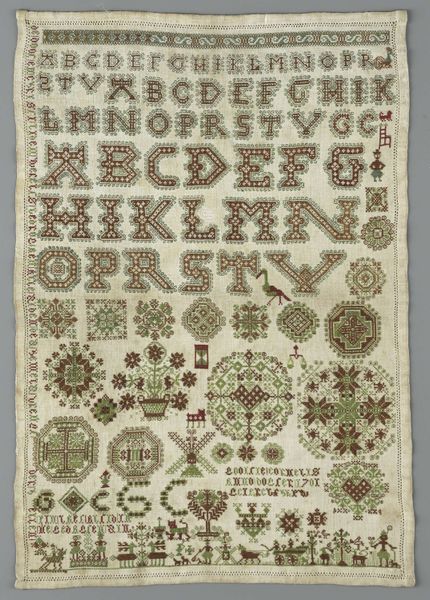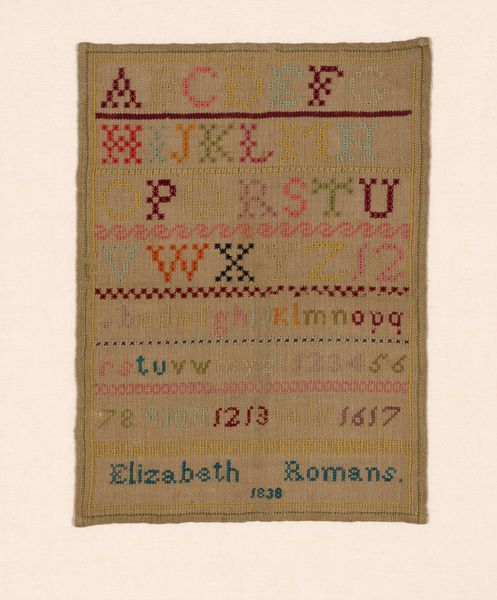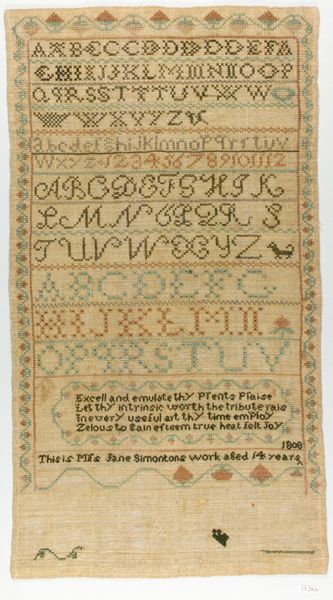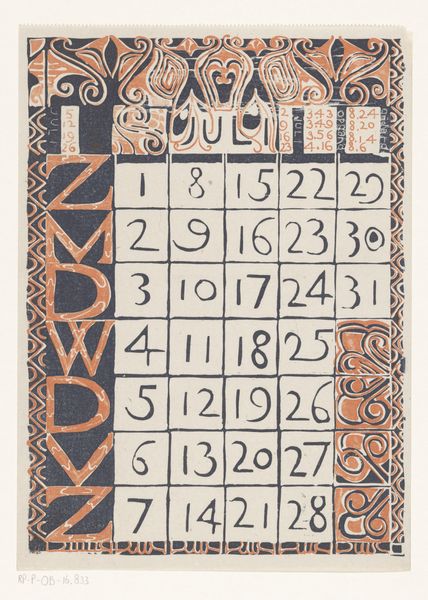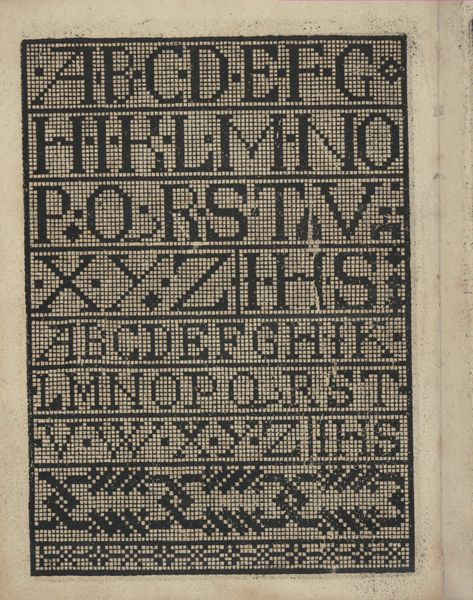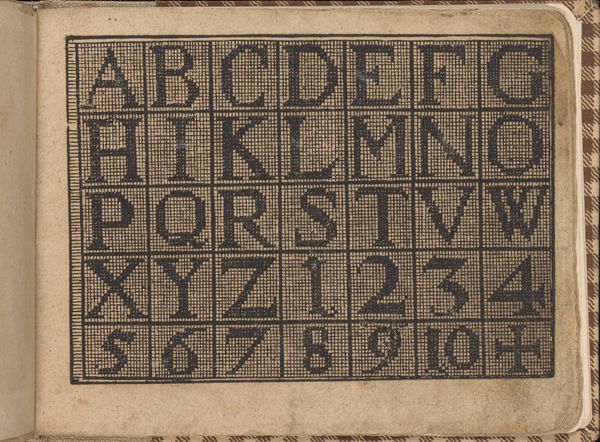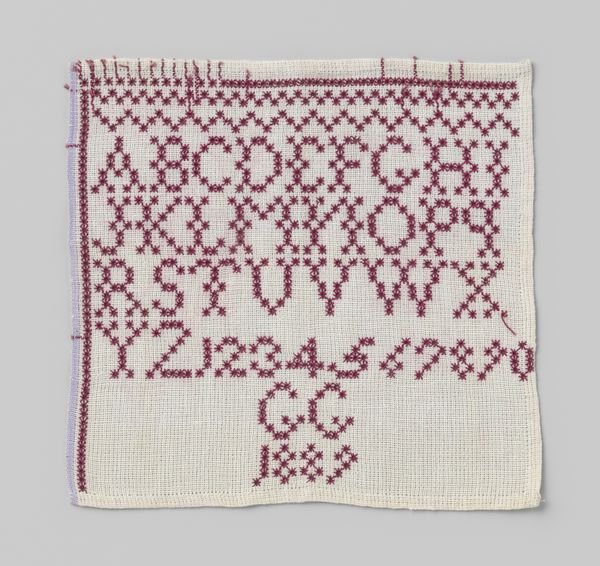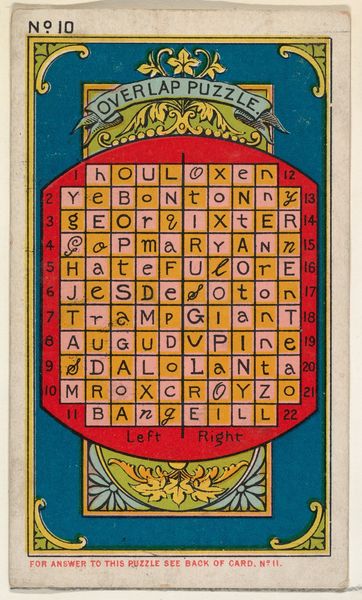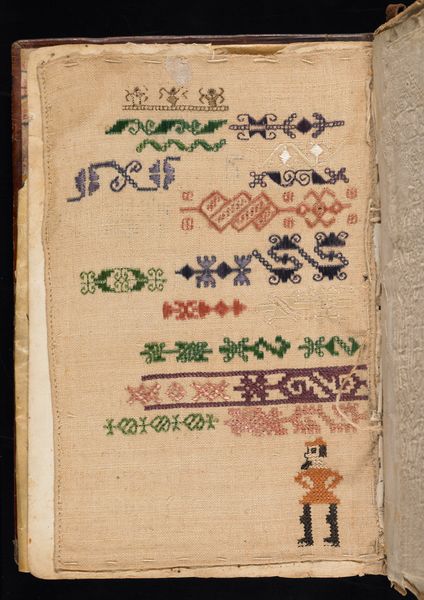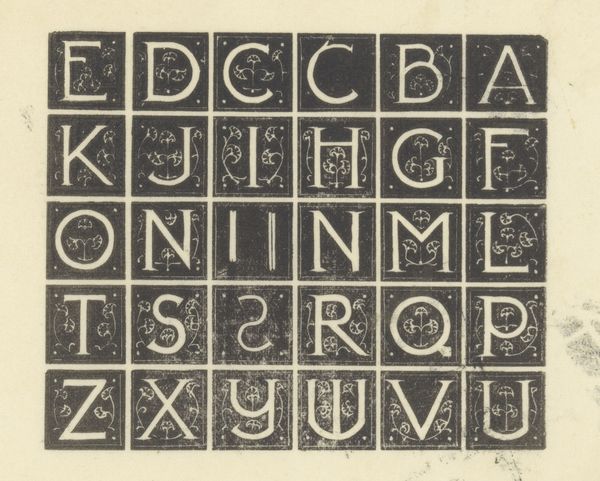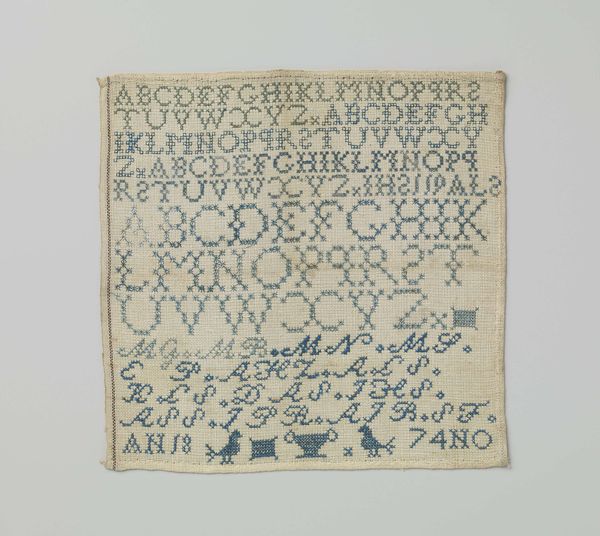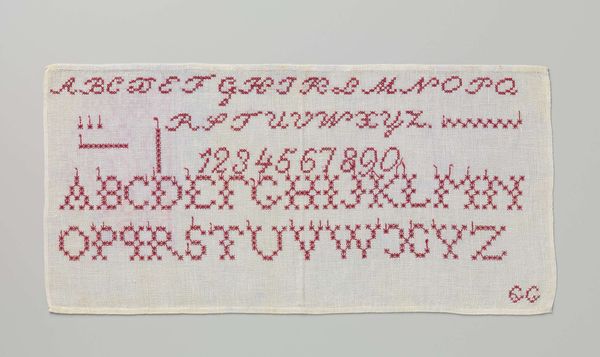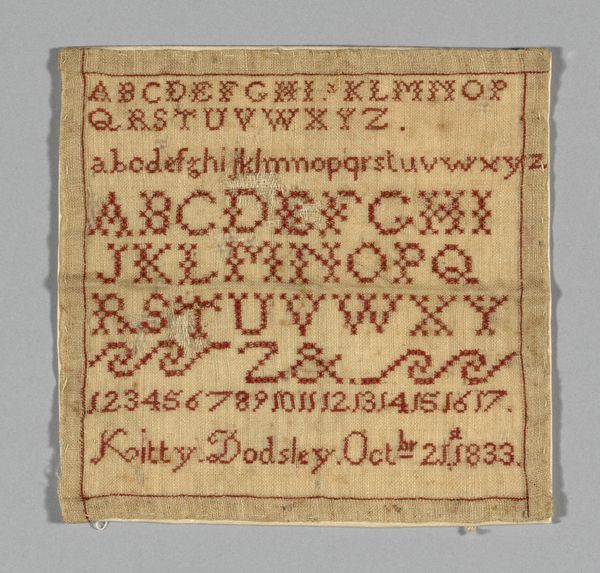
drawing, textile
#
drawing
#
pattern
#
textile
#
figuration
#
folk-art
#
geometric
#
decorative-art
Dimensions: overall: 30 x 22.9 cm (11 13/16 x 9 in.) Original IAD Object: 9 1/2" high; 4 1/2" wide
Copyright: National Gallery of Art: CC0 1.0
Curator: I’m struck by the sheer dedication it must have taken to create this. The “Sampler,” likely made around 1936, embodies folk art traditions, presenting us with alphabets, numbers, and charming decorative motifs, all rendered in meticulous detail with needle and thread. Editor: My first impression is one of… tranquility. Despite the rigid structure of the alphabets and numbers, there's a gentle, almost pastoral quality. The colors, faded greens, muted reds—they evoke a sense of a time long past. How do you interpret the visual symbols used here? Curator: The visual symbols are so key! Note how the alphabets appear in varying sizes and colors. Consider them beyond mere decorative flourishes. Each choice holds a potential layer of meaning and affective significance. For example, were specific colors meant to invoke certain feelings, or reflect particular cultural values prevalent in 1930s folk art? Editor: That’s an interesting thought. Viewing it from a social history lens, the Sampler’s existence tells us something about craft traditions of that era. Textile arts often served a didactic function for young women. I wonder how this particular piece reflected or reinforced social roles. Was it a display of domestic skills, meant to be seen within a specific family or community? Curator: That's entirely possible. I’m also drawn to the geometric patterns. Beyond their aesthetic appeal, I view the geometric shapes and balanced composition as mirroring underlying needs for order and structure. The decorative-art aesthetic might reflect an innate psychological response to patterns and their emotionally stabilizing impact. Editor: A stabilizing impact—that’s insightful. Museums play a powerful role here, as their conservation and exhibition policies impact how the public understands such items. Has this been framed, mounted? How are the historical values contextualized for modern visitors? These are key to the presentation and interpretation. Curator: Indeed. Ultimately, engaging with this “Sampler” opens a portal, of sorts, to reflect upon enduring continuities between us and the needleworkers of the past. What they valued, how they expressed those values—these are things we can still ponder today. Editor: Exactly! This is not merely thread on cloth; this artifact provides direct connection to a past woven into our current cultural fabric. Its presentation therefore becomes crucial, emphasizing its importance both historically and in the present moment.
Comments
No comments
Be the first to comment and join the conversation on the ultimate creative platform.
